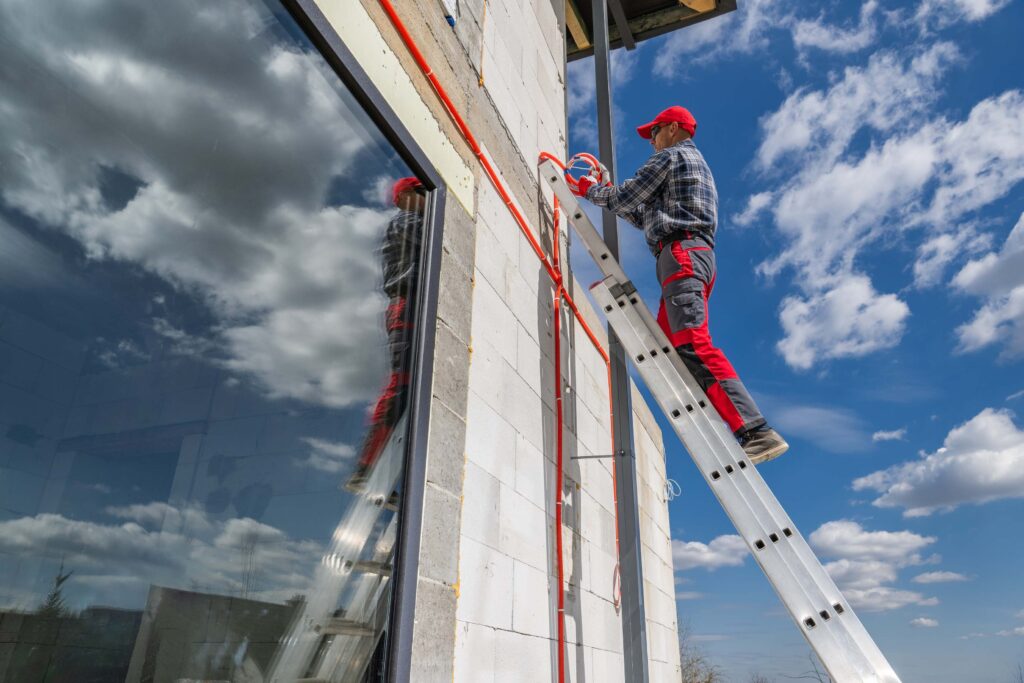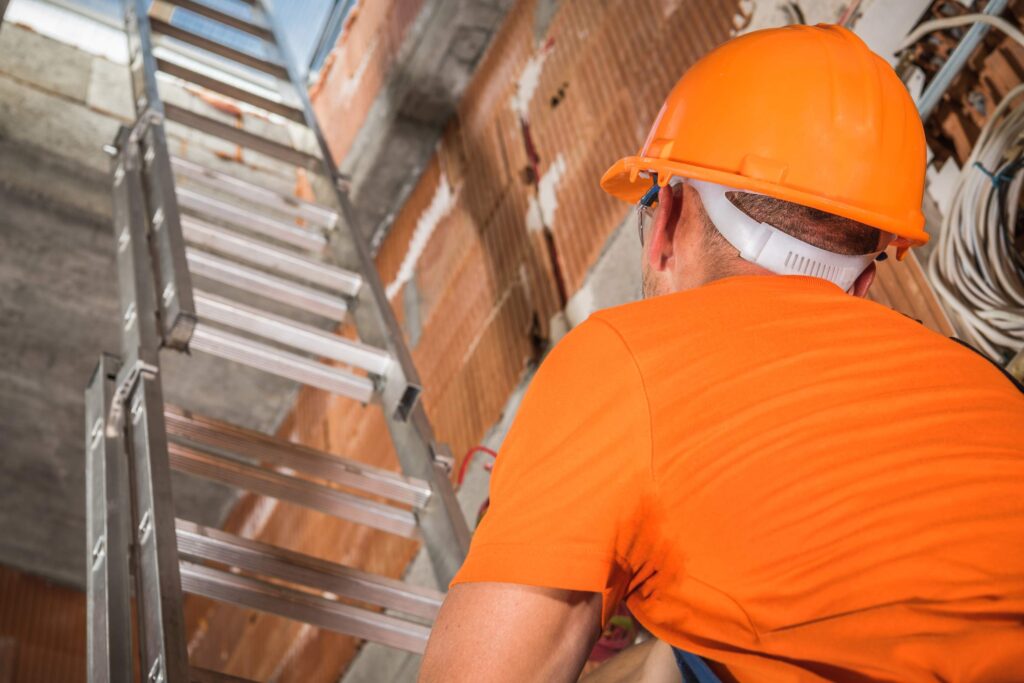Ladders seem simple, but they cause thousands of injuries yearly. In 2023, the U.S. Consumer Product Safety Commission reported over 160,000 ladder-related injuries treated in emergency rooms. Falls from ladders can result in broken bones, head trauma, and even fatalities. This blog explores common ladder accidents, offers Ladder Safety Tips, and shares actionable Ladder Fall Prevention strategies to keep you safer.
Why Ladder Accidents Happen
Ladder mishaps often result from human error or unsafe conditions. Workers rush, skip safety checks, or use faulty equipment. Understanding the causes helps you avoid them.
- Overreaching: Leaning too far can cause a ladder to tip. A 2021 construction site incident in Ohio saw a worker fall 12 feet after overreaching to paint a wall resulting in a broken arm.
- Improper Setup: Uneven ground or incorrect angles destabilize ladders. In 2019, a Texas roofer fell 15 feet when his ladder slid off a sloped driveway causing a concussion.
- Faulty Equipment: Damaged or worn ladders fail under weight. For example, cracked rungs or loose hinges increase risks.
- Ignoring Weight Limits: Overloading ladders beyond their capacity leads to collapses. Pay attention to the ladder’s rating and ensure it is not exceeded. The load you present to the ladder must include the worker and any materials or tools being carried.
- Lack of Training: Workers without proper guidance misuse ladders or skip OSHA Ladder Rules.
Are you confident your ladder setup follows safety guidelines, or could a small oversight lead to a serious fall?

Real-World Ladder Incidents
Real accidents highlight the stakes of ignoring Ladder Safety Guidelines.
- Ohio Construction Fall (2021): A 30-year-old painter ignored Ladder Fall Prevention advice. He leaned too far right to reach a corner, causing the ladder to tip. He fell 12 feet, fracturing his arm and missing six weeks of work. A simple fix—repositioning the ladder—could have prevented this.
- Texas Roofing Incident (2019): A roofer set his ladder on a sloped driveway without securing it. The ladder slid out, and he fell 15 feet, suffering a concussion and sprained ankle. Following OSHA Ladder Rules for stable ground would have avoided the accident.
These cases show how small mistakes lead to big consequences. Proper setup and awareness save lives.
Ladder Safety Tips for Accident Prevention
Preventing ladder accidents requires vigilance and adherence to Ladder Safety Guidelines. Follow these practical steps to stay safe.
Inspect Ladders Before Use
Check for cracks, loose rungs, or bent frames. A 2022 OSHA report found 20% of ladder accidents involved defective equipment. Never use a damaged ladder.
Choose the Right Ladder
Match the ladder to the job. Use a fiberglass ladder for electrical work to avoid shocks. Ensure the ladder’s height reaches the work area without standing on the top rung.
Set Up Properly
Place ladders on firm, level ground. Use the 4-to-1 rule: for every 4 feet of height, move the base 1 foot from the wall. Secure the top and bottom to prevent slips. If working on uneven ground, install ladder leg extenders, or use secure blocking.
Follow the Three-Point Rule
Maintain three points of contact (two hands, one foot, or two feet, one hand) while climbing. This reduces the risk of losing balance.
Avoid Overloading
Check the ladder’s weight rating. Include your body weight plus tools. Exceeding limits risks collapse.
Use Personal Protective Equipment (PPE)
Wear non-slip shoes and a hard hat. For heights above 6 feet, consider a harness tied to a secure anchor.
Train Workers
Ensure everyone follows OSHA Ladder Rules. Regular training reduces errors. In 2023, companies with ladder safety programs reported 30% fewer incidents.
OSHA Ladder Rules to Know
OSHA Ladder Rules set clear standards to prevent falls. These regulations apply to workplaces but benefit homeowners too.
- Ladder Maintenance: Inspect ladders regularly. Remove defective ones from service.
- Angle and Stability: Set ladders at a 4-to-1 angle. Secure them to prevent movement.
- No Top Rung Use: Never stand on the top rung or step of a ladder.
- Clear Access: Keep ladder areas free of debris or obstacles.
- Training Requirements: Employers must train workers on ladder use and hazards.
Following these rules cuts risks significantly. OSHA citations for ladder violations dropped 15% from 2020 to 2023 as compliance improved.

Additional Ladder Fall Prevention Strategies
Beyond OSHA Ladder Rules, adopt these habits for extra safety.
Plan Your Work
Map out tasks to avoid overreaching. Move the ladder as needed instead of stretching.
Use Spotters
Have a coworker monitor the ladder’s base on uneven surfaces. This prevents slips during climbs.
Avoid Bad Weather
Wind or rain makes ladders slippery. Wait for clear conditions.
Store Ladders Properly
Keep ladders in dry, secure areas to prevent damage. A warped ladder fails when you need it most.
FAQs:
Key Takeaways
- Inspect and Choose Wisely: Always check ladders for damage and select the right type for the job.
- Follow OSHA Rules: Adhere to OSHA Ladder Rules for setup, weight limits, and training to minimize risks.
- Stay Balanced: Use the three-point contact rule and avoid overreaching to prevent falls.








11kkbet
11kkbet, Let’s see if 11kkbet can give me some luck and some wins! Wish me luck guys! 11kkbet